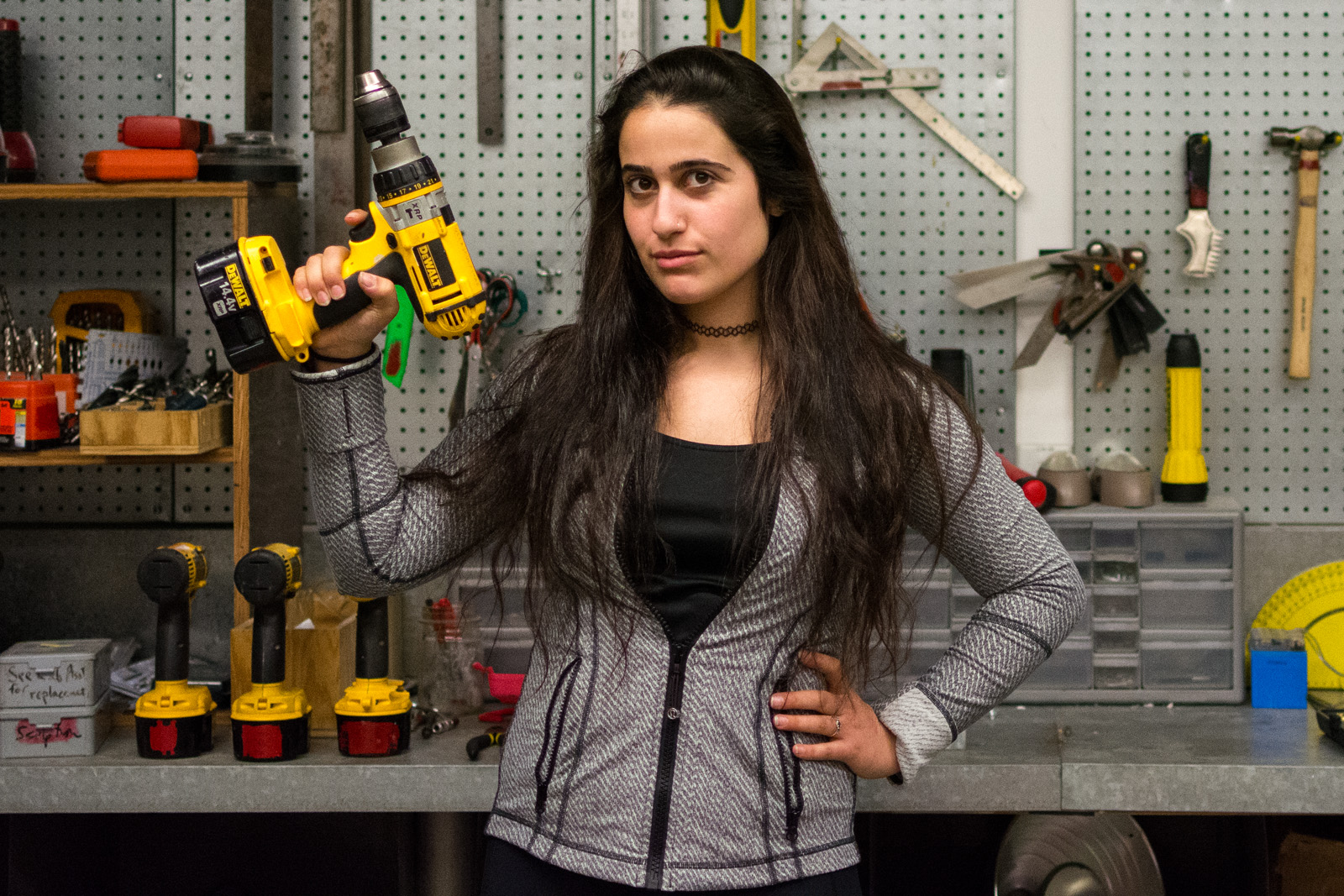Art student showcases themes of distraction in sculpture

First-year art student Ofri Shmul found inspiration for a sculpture, titled “Distracted,” after she noticed how much time students spent looking at their phones throughout their day. She used tools such as pliers to shape wire into a human figure holding a lightbulb. (Hannah Burnett/Daily Bruin)
By Linda Xu
March 12, 2017 9:11 p.m.
Ofri Shmul’s broken phone sparked her interest in exploring how technology distracts students from the real world.
The first-year art student began to notice students gazing not at the scenery on campus, but down at the brightly lit screens of their digital devices while walking to class.
Shmul incorporated her observations into a tangible art piece she constructed for her Art 1B: “Sculpture” class. Students researched any topic they wanted and applied their research to their sculpture. In Shmul’s research, she found that distraction from technology and attention-deficit hyperactivity disorder manifest themselves in the same region of the brain, the limbic system.
She intertwined themes of both technological distraction and ADHD into her sculpture, titled “Distracted,” a representation of a person looking down at a lightbulb in the palm of their hand. The piece is constructed primarily of shaped metal wire suspended in the air. All aspects of the sculpture – from the process of conceptualizing it to designing its physical appearance – were meant to convey the abstract central theme of distraction.
The wire sculpture now hangs off Shmul’s loft bed in De Neve, after she submitted it for class critique last month.
[Read more: Gallery: The Artists of UCLA: Shmul]
Shmul’s research included filming students on her phone as she walked to the mailroom from her dorm. She said people bumped into each other or didn’t notice someone calling their name, unaware of the environment since they were immersed in their devices.
“It’s funny because we have such a beautiful campus and everyone is on (his or her) phone,” she said.

In her wire figure, Shmul recreated the preoccupied position of students staring down at phones cradled in their hands. Instead of placing a phone in the student’s hand, which she thought was too literal a reference, she decided to use a shining lightbulb to represent distraction as a larger concept.
“It’s kind of hard to look at the lightbulb directly,” she said.
Shmul said she wanted the lightbulb and the light of a phone screen shining in someone’s face to suggest both knowledge and distraction, similar to ADHD.
[Related: Undergraduate Juried Exhibition defies theme, showcases student art]
ADHD encompasses a wide range of symptoms, with distractibility being part of the attention-deficit side of the disorder, said psychology professor Steve Lee. For individuals with ADHD, technology such as smartphones may serve as another source of distraction by supporting a very convenient, reinforceable habit. Distractibility, regardless of the source, manifests in similar regions of the brain, he said.
“It may not be that much different in terms of the underlying neurobiology,” he said.
Shmul showcased the anatomical model of a human brain by connecting pieces of wire wrapped around each other to recreate parts of the limbic system, such as the hippocampus and amygdala, represented as two protruding wire bulbs behind the eyes.
Shmul connected the eyes of the figure to its hand using clear fishing wire to make the link between people and technology deliberately visible.
“It’s both representative of something that is not there, but something that is also definitely there,” she said.
The abstract nature of art makes topics such as mental disorders more accessible to viewers, said Lauren Kim, a second-year Design | Media Arts student.
“If you’re viewing something and you don’t necessarily know the intent behind why it was made, you can really shape art into whatever you’d like it to be,” she said.
[Related: Student develops mobile app to connect visitors to Sculpture Garden]
Classmate and third-year art student Sasha Zamani interpreted the lightbulb as a universal symbol for ideas.
From the gaze of the figure’s face, she viewed the sculpture as someone looking down at their phone and getting distracted.
Shmul said she wanted to keep the theme of distraction as the main focal point of her sculpture. Rather than focusing on just the digital aspect of technology or the impulsivity aspect of ADHD, she thought the concept of distraction could effectively encompass all of her research, she said.
“Being distracted doesn’t just include one part of you,” she added. “It’s very universal in your body.”


